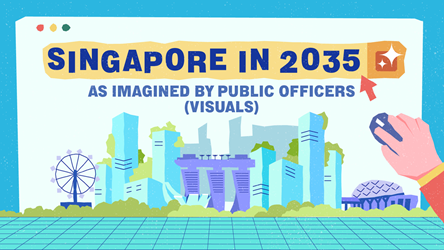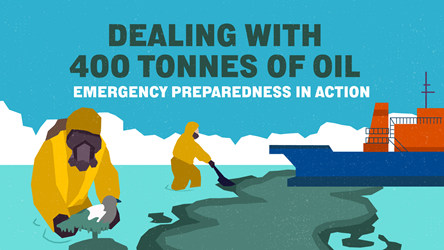Focusing On The Essential Work

Day to day, countless distractions already lead our attention astray. Yet, unnecessary work still plagues our perpetually full schedules. We often bemoan it, but what exactly is “unnecessary work”?
According to Norbert K. Semmer, an occupational health psychologist, unnecessary work are tasks that
- do not make sense (e.g., archiving useless minutiae),
- could be avoided (e.g., holding meetings instead of crafting emails), or
- could be done with less effort and greater efficiency (e.g., with automation instead of manually).
Unnecessary work and ineffective processes can sap workers’ motivation, energy, morale and mental strength. To overcome this, we first have to unpack the types of unnecessary work we might face.
1. Shallow Work
Sometimes, we find ourselves processing emails, responding to notifications, and doing repetitive administrative tasks for hours on end. Important as these tasks may be, be mindful to limit the time spent on them as much as possible.
Productivity expert Cal Newport defines deep work as “activities performed in a state of distraction-free concentration that push your cognitive capabilities to their limit”.
While we need not be in a perpetual state of intense concentration, scheduling time to do deep work would do wonders for our productivity and add immense value.
A useful related concept is “immersive time” and “process time”, as described in Dan Charnas’ book Work Clean.
- “Immersive time” is for mentally intensive tasks that require focus, such as when a chef stirs, chops or seasons food.
- “Process time” is for more hands-off tasks (e.g., boiling water, pre-heating ovens) that should be quickly done to enable other tasks to happen, or allow others to do their work.
Outside the kitchen, we see that we need immersive time to do deep work such as brainstorming ideas for campaigns and writing reports. Process time is for repetitive or less intensive tasks that are also important to prevent bottlenecks, such as replying to emails and approving others’ work.
The Solution
Identify which types of work make the most impact, and which tasks are necessary but should not be taking up too much of our time.
Using the Eisenhower Matrix can also help. According to the Journal of Consumer Research, time-sensitive tasks draw more attention even when less urgent tasks offer better outcomes. Learn to recognise and remove unimportant/shallow work.

Automate low-impact "busy work” as much as possible. Make use of the latest technology that enables effective work collaboration and faster processes.
- The Workpal app can be used for employee transactions such as booking meetings, applying for leave, setting up corporate billing for staff e-commerce orders, and getting approvals.
- SG-Teams allows for documents to be edited by multiple users in real-time.
- Cloud storage like OneDrive provides easy file-sharing.
For example, the Ministry of Communications and Information replaced their manual Excel roster sheet with a Smart Rostering System, as part of the Public Service’s Million Hours Challenge. This is estimated to have cut 156 hours of work annually.
2. Unnecessary Meetings
Meetings are meant to facilitate discussions so that people can make decisions to reach organisational goals together.
Red flags that mark an unnecessary (and often unproductive) meeting include:
- A lack of an agenda with no concrete objectives. This leads to vague and possibly unfruitful meetings.
- An overly long duration. A meeting that stretches past the agreed end-time usually indicates a build-up of past issues or inefficient discussion.
The Solution
Consider: Will a concise email or chat suffice? Are you involved in the agenda? Will your input, if any, be useful? Use these prompts to decide whether or not to join or schedule a meeting.
3. Bureaucracy
Leaders play a significant role in reducing bureaucracy, a common obstacle to productivity. Having to pass work through several layers of management approvals can slow down processes.
Some common grievances are:
- Speed bumps and roadblocks: As public officers’ work go through many layers of supervisors’ approval, they feel less able to respond or get things done quickly.
- Red light, green light: As work outcomes are sometimes dependent on supervisors’ decisions, officers may feel restrained in their autonomy and independence for taking action.
The Solution
The term “bureaucracy” can carry a negative connotation, suggesting needlessly complicated procedures. In a more positive view, the Public Service follows a structured system with levels of approval to ensure accountability, guidance and feedback from proven leaders. Every officer has a place in this structure to enable an effective government.
To build trust and transparency for agile decisions, every officer, regardless of position, should try to bridge any gaps in communication and work together more frequently and directly, with the mindset to empower the other person in their role.
To overcome the pitfalls of bureaucracy, try:
- Regularly reviewing whether layers of clearance can be compressed
- Setting clear directions and expectations to avoid guesswork
4. Uncertainty
When we do not fully understand the assignment, we often resort to assumptions.
The brain craves certainty, and avoids uncertainty as if it is a type of pain, writes Dr David Rock, a neuroscientist and author of Your Brain at Work. Uncertainty about the future creates a threatening “alert” response in the brain’s limbic system.
With our brains wired this way, how should we best cope with uncertainty?
The Solution
When in doubt, communicate. Establish clear and precise work goals, as well as safe spaces for clarification. By doing so, we avoid getting caught in webs of confusion – and doing unnecessary work from second-guessing others.
Whatever your position, be a role model for communicating clearly. Clarify doubts and initiate questions. Your confident actions can bear tangible results that inspire confidence in colleagues. Engaging deeply with team members also builds trust, paving the way for more authentic conversation.
At the End of the Day
No matter our level of experience or seniority, we can strive to reduce unnecessary work through collective efforts.
The next time you feel knackered from your seemingly never-ending pile of work, try identifying opportunities for improvement. Evaluate your tasks to see if they are truly required, and communicate your needs to your supervisor or colleagues. Cutting unnecessary work is a skill, and it’s OK if you’re not great at it yet – you’re a work-in-progress.

For more stories like this, subscribe to the Challenge newsletter or follow the Challenge Telegram channel.
- POSTED ON
Jan 24, 2022
- TEXT BY
Ryan Oh
Jelyn Lim
- ILLUSTRATION BY
Jelyn Lim








